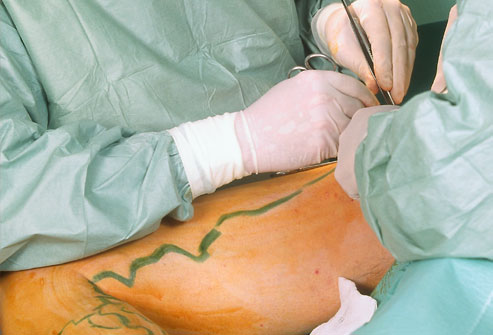Varicose veins, also known as varicoses or varicosities, occur when your veins become enlarged, dilated, and overfilled with blood. Varicose veins are often painful and have a bluish-purple or red color. Often, varicose veins appear swollen and raised.
I.Overview
What Are Varicose Veins?
Varicose veins, also known as varicoses or varicosities, occur when your veins become enlarged, dilated, and overfilled with blood. Varicose veins are often painful and have a bluish-purple or red color. Often, varicose veins appear swollen and raised.
The condition is very common, especially in women. Half of all Americans over the age of 50 have varicose veins. In most cases, varicose veins appear on the lower legs.
II.Symptoms
Symptoms of Varicose Veins
The primary symptom of varicose veins is highly visible, misshapen veins, usually on the legs. You may also have pain, swelling, heaviness, and aches in the legs.
In some cases, you can have swelling, discoloration, or ulcers around your ankles, too.

III.Diagnosis
Diagnosing Varicose Veins
Your doctor will likely examine your legs and visible veins while you’re sitting or standing to diagnose varicose veins. They may ask you about any pain or symptoms you’re having.
Your doctor may also want to do an ultrasound to check your blood flow. This is a non-invasive test that uses high-frequency sound waves. It allows your doctor to see how the blood is flowing in your veins.
Less commonly, an angiogram may be used to further assess your veins. During the angiogram, your doctor injects a special dye into your legs and X-rays are taken of the area. The dye appears on the X-rays, giving your doctor a better view of how your blood is flowing.
Tests such as an ultrasound or angiogram help ensure that another disorder like a blood clot or a blockage is not causing the pain and swelling in your legs.
IV.Treatment and Prevention
Treating and Preventing Varicose Veins
In general, doctors are conservative when treating varicose veins. You’ll probably be advised to make changes to your lifestyle, instead of trying more aggressive treatments.
Lifestyle Changes
The following changes can help prevent varicose veins from forming:
- Avoid standing for extended periods of time.
- Avoid excessive sun exposure.
- Lose weight or maintain a healthy weight.
- Exercise to improve your leg strength.
- Refrain from crossing your legs for extended periods of time.
If you already have varicose veins, you should take the steps above to prevent new varicose veins. You should also elevate your legs whenever you’re resting or sleeping.

Compression
Your doctor may advise you to wear special compression pantyhose or stockings. These place pressure on your legs in a good way, so the blood can flow more easily to your heart.
The level of compression varies, but most types of compression stockings are available in drugstores or medical supply stores.
Surgery
If lifestyle changes aren’t working or if your pain is severe, your doctor might try a more invasive procedure.
Vein stripping is a surgical operation that requires anesthesia. It has a recovery time of about three to six weeks.
During the procedure, your surgeon removes your varicose veins through incisions. It’s done only if the varicose veins are causing a lot of pain or damaging your overall health. Vein-stripping surgeries are less common today because newer, less invasive options are available.

Other Treatment Options
Other treatment options for varicose veins use lasers or radiofrequency to either remove the veins or seal off blood flow. Such procedures may cause bruising or swelling immediately afterward. But with time, they improve the appearance of the legs. You should always talk to your doctor about your treatment options and the risks before choosing a method.
Source healthline.com
DUCTIN SURGICAL CLINIC
Tin tức liên quan

Performance diagnostique de l’interféron gamma dans l’identification de l’origine tuberculeuse des pleurésies exsudatives

A Mixed Phenotype of Airway Wall Thickening and Emphysema Is Associated with Dyspnea and Hospitalization for Chronic Obstructive Pulmonary Disease.

Radiological Approach to Asthma and COPD-The Role of Computed Tomography.

Significant annual cost savings found with UrgoStart in UK and Germany

Thrombolex announces 510(k) clearance of Bashir catheter systems for thromboembolic disorders
Phone: (028) 3981 2678
Mobile: 0903 839 878 - 0909 384 389







